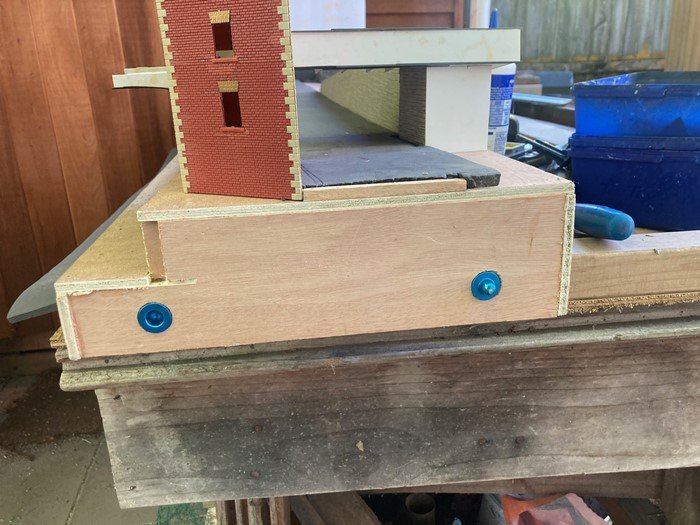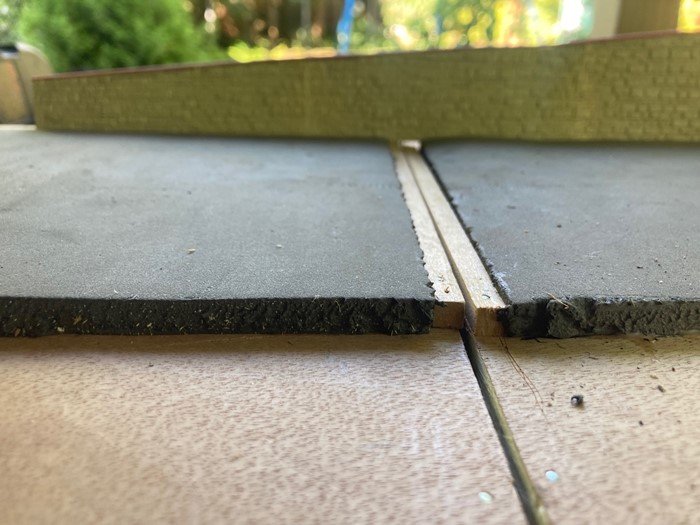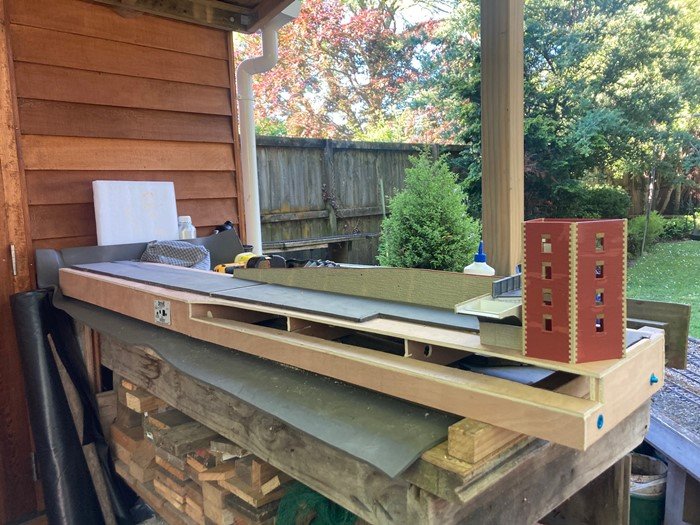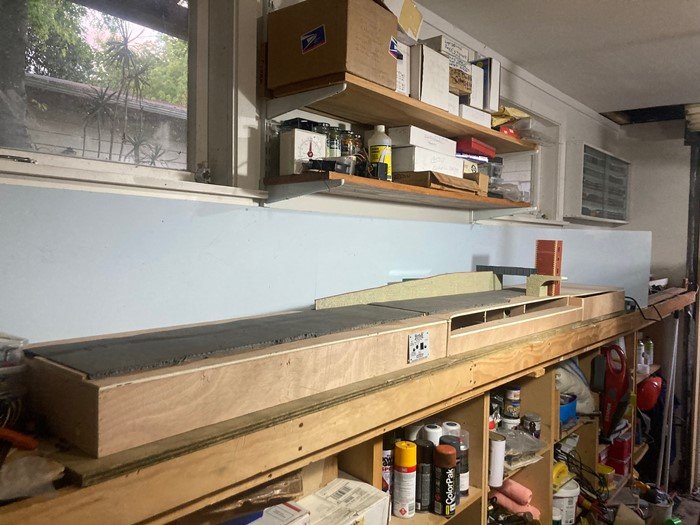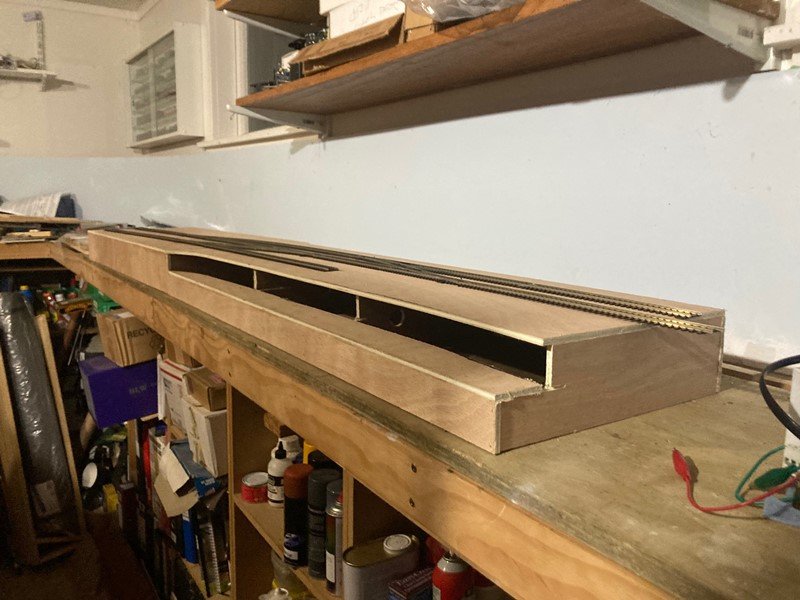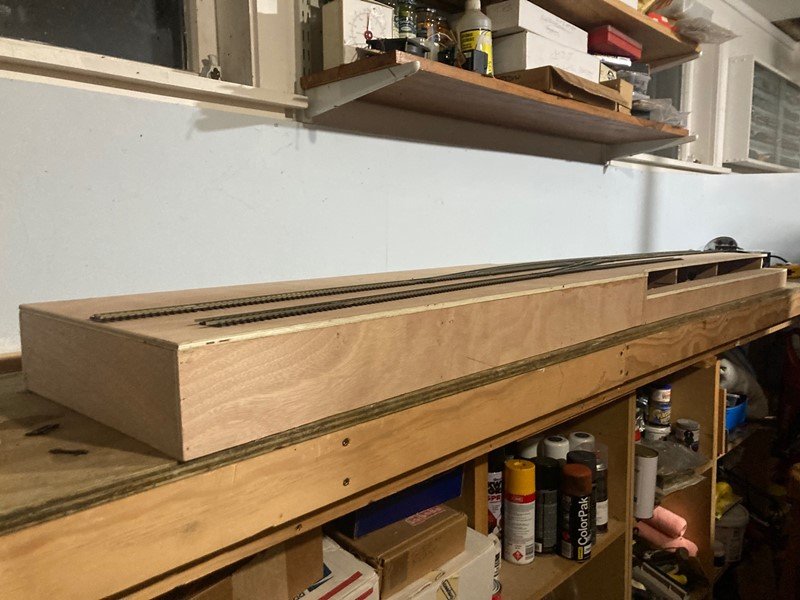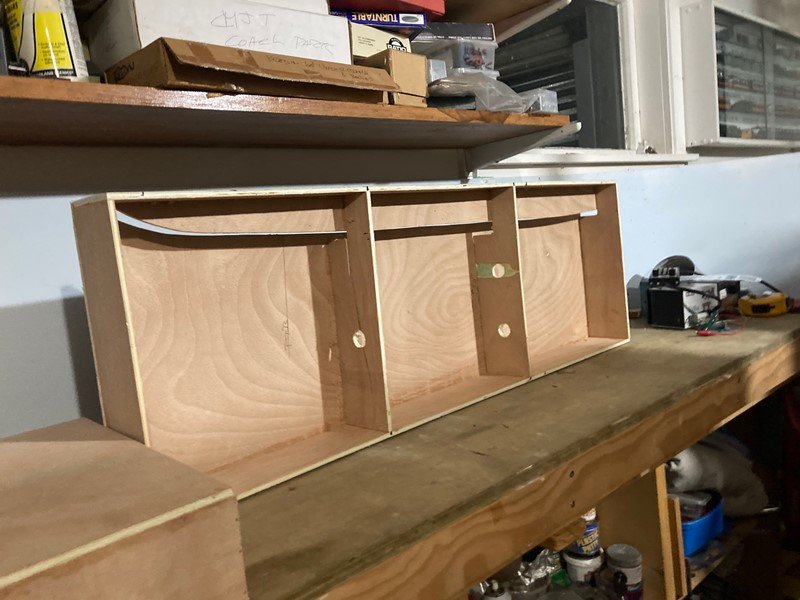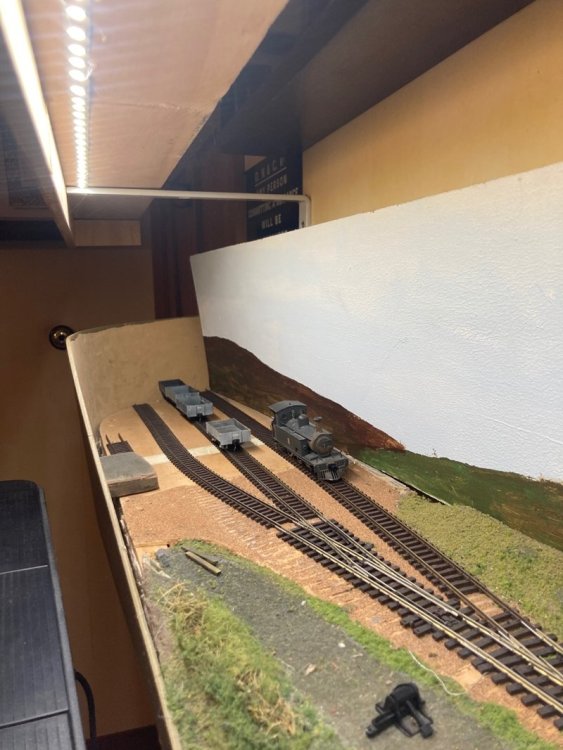-
Posts
4,857 -
Joined
-
Last visited
-
Days Won
119
Content Type
Profiles
Forums
Events
Gallery
Blogs
Store
Community Map
Everything posted by Mayner
-
Reminds me of a fire drill during the construction of a large Watford shopping center during the late 80s. Although there was relatively little of a flammable nature on site we were constructing the concrete frame the company recently had major fires on two of its most prestigious London sites and an order went out from head office for a fire drill on every site. Anyway to get to the heart of the story, my job was to physically check that the site was clear after our trade contractors managers and foremen had completed a head count that the site was clear. Like Harry a concrete finisher was diligently chipping away with his hammer and chisel wearing ear defenders inside a plant room. At the time apart from safety helmets and steel toe capped boots construction workers seldom wore ppe, our concrete finisher was probably the only one of the over 100 workers on site to wear hearing protection, being already a bit deaf he did not hear the klaxon and preferring to work apart from breaks he was invisible to his work mates and his boss forgot to check. The look of surprise when he realised that he was the only one on site was something else, al those were the days!
-
Interestingly Colin Flannigan appears to have built his first BCDR 4-4-2T out of a Ks Adams Tank Loco kit during the 1970s
-
Nice to see these Triang(-Hornby) upgrades, their main line diesels & MK1 coaches were cutting edge models by the standards of the day and still pass muster 60 years later.
-
Kia Kaha! (Maori Stay Strong) Don't let it get you down, life is full of ups and downs it will come right in the end. As a teenager I wanted to be a mechanical engineer but could no get into college because secondary school did not teach the required subjects, was unemployed for 6 months before I was offered what's now called an Internship in construction, very quickly discovered I had strong problem solving and project management skills and completed a lot of interesting projects over the past 30 years. Although there have been setbacks along the with construction boom-bust cycle I am definitely better off than when I started out and in a way have fulfilled my mechanical engineering ambitions even if its in 1:76 scale
-
Final castings arrived for the Luggage Vans on Monday morning, expect to start shipping outstanding orders of Heating and Luggage and Luggage Van Kits from early next week.
-
The Ore Wagon looks fantastic combination of dumb and sprung buffers, IRM highly unlikely to bring out a mass produced rtr version, real Mike Sharman or Richard Chown stuff. The British Builders archives held by the HMRS and various Museums are a real treasure trove of 19th and early 20th Century Irish locos and rolling stock.
-
The DWWR opens almost look like early ore wagons with those massive solebars extending past the end framing almost like dumb buffers. Perhaps a hangover from the boom years of the Avoca Mines when copper ore was shipped by rail to Kingstown (Dunlaoire) Mineral Wharf. Hopefully some day you will get round to building a typical 19th Century DWWR 0-4-2 Goods Locomotive to haul them
-
It might be worth while trying Humbrol Decalfix rather than Microset and allow at least one week to allow any trapped moisture to evaporate before applying a clear sealer. Microset may be too severe Railtec Transfers recommend Decalfix which has worked well in finishing our rtr 3D printed brake vans. I use Gunze B523 "Mr Super Clear UV Flat" aerosol(misted on from a distance) for finishing wagons and locos as Testors Clear Cote is no longer available. Batch building wagons I allow a minimum of one weeks drying time after applying decals in a room with temperature and humidity control before finishing.
-
1100 and 1101 were basically the fore runners of the British Railways Derby and BRCW Type 2 Classes probably one of the most successful and useful Modernisation Scheme designs. https://www.derbysulzers.com/cie.html The main weakness in the two Irish mixed traffic prototypes was rough riding due to the plate frame carriage bogie design, the 1100-1101 engine and electrical were sound the Metropolitan Vickers electrical system was considered superior to the systems used in the BR Type 2. Its possible CIE went for plate frame bogies because cast steel bogies were un-available or prohibitively expensive in 1948 or someone in Inchacore simply compared notes with Eastleigh on Southern Railways experience with EMU and diesel electric locomotive bogies. Its a pity that CIEs budget did not stretch to bringing 1100-1101 into line with the B101 Class by increasing the BRCW order to 14 sets of parts, an additional pair of B Class locos with universal route availability would have been very useful until sufficient re-motored A Class were available to replace the B101 and pairs of GMs on the heaviest duties. The E Class are German locos with high speed Maybach Engines and Mekydro hydraulic transmissions, CIE gradually phased out the D301 Class Ireland sole example of the classic British diesel shunter by the late 1960s.
-
Completed the baseboards and installed track underlay this weekend. I fitted DCC Baseboard Alignment boards to the baseboards ends using a piece of ply with two pilot holes as drilling ji The underlay is dense foam ground sheet glued with PVA and weighted down until dry. I fitted strip basswood to the baseboard edge to assist with track alignment. Mock up on the outside work bench, Tower Building inspired by Grand Canal Street and overbridge will act as fiddle yard view blocker. Set up in the Workshop/Layout Room with Fiddle Yard baseboard fitted. The fiddle yard baseboard is basically an inverted box with an open top. I am planning to use a traverser using metal drawer slides., I will need to fit stripwood runners to the ply ends and an intermediate to support the slides, the traverser table will basically sit on top of the slides clear of the ply framing. The next jobs are to sort out the traverser top for the fiddle yard and drill out the pilot holes for the point motors. I seem to have disappeared most of the track/pointwork for this end of the layout since Saturday morning, I suspect it has fallen into the narrow gap behind the under-baseboard storage units which will require a major clear out
- 56 replies
-
- 12
-

-
Dan Renehan a CIE driver wrote a series on papers on CIE diesels including the E401 & 421 Classes in the IRRS journal during the 1980s. The majority of the operational E401s lost their exhaust cowl and silencer as a result of an exhaust fire when one of the class was working as Inchacore Works Pilot (Sambo). The class were gradually withdrawn in the late 70s/early 80s though apparently the the last operational loco possibly E401 retained her silencer and cowl. The E401s were basically worn out after years on heavy duties working Heuston-North Wall transfer freights. Some E421 originally based at Connolly were transferred to Heuston to undertake coaching pilot duties. According Locos and Stock of CIE & NIR (Doyle & Hirsch) E401,411,415,417 and 419 were withdrawn by 1979
-
I did not realise that the GSR operated a Cork-Bandon local passenger service, I was under the impression that Bandon was served by Cork-Skibbereen & Clonakilty trains in CBSCR and GSR days. The Muskery is an odd one the GSR received a 5% Baronial Dividend on the CMLR share capital for 10 years following the Amalgamation, the GSR operated a skeleton service of one or two trains daily in its final years until the dividend payments ceased in 1934. Presumably the payments would have ceased if the GSR closed the line earlier. According to Shepherd the GSR wanted to close the Timoleague and Courtmacsharry line in 1925 but continued to operate the line possibly in order to continue receiving a dividend under the Baronial Guarantee scheme but was worth while keeping open for goods and excursion traffic.
-
Branch lines feeder branch lines close to large cities and towns such as Dublin, Cork and Drogheda tended to loose their passenger service or completely once the railways established their bus and road delivery services. Macroom lost its passenger services in the early 30s and the Passage and Muskerry lines were closed completely during the same era, I suspect the Muskerry hung on until the Government Baronial Guarantee payments ceased in 1934 otherwise the GSR would have closed the line earlier. The GSR & CIE seem to have operated a sparce passenger service on the Tullow Branch, the Meath line and Cavan Branches, it was cheaper to serve Naas, Navan and Cavan by bus direct from Dublin with the bonus of GSR/CIE operating a direct Dublin-Navan-Kells-Cavan service something that was impossible to do by rail. The Ardee goods service appears to have survived because it could be worked as a Drogheda shunting or pilot duty in a similar manner to the Tralee Pilot working the Castleisland, Listowel and Fenit shunts rather than an allocated locomotive. The principal applied on a larger scale before the 1963 Closures with the Liffey Junction Pilot (G 611 Class) working the weekly Edenderry Goods and trip workings to Kilmessan and Drumree when Clonsilla-Navan closed to through freight workings, the Clara Pilot (G601) worked the Banagher Goods in addition to shunting the goods yard, Ranks/RF Hall and LF Goodbody Jute factory sidings, during the 1930s the Mallow pilot worked the Kanturk Newmarket goods allowing a Sentinel Railcar replace a locomotive and coaches on the branch passenger service.
-
Its interesting how overseas railways turned out successful 4-6-4T locomotives while British companies struggled to produce a successful 4-6-4T tank with the notable exception of the Brighton Baltics. The main problems with the British locos appears to have been poor front end and ashpan design. On the 3'6" gauge NZR successfully used 4-6-4T for branch line, mixed traffic and suburban design. Interestingly the first NZR Baltics the WW Class of was a 1913 development of a 1904 2-6-4T design, the final NZR 4-6-4T design the Wab/Ws class was a 1919 development of a 4-6-2 Mixed Traffic design https://en.wikipedia.org/wiki/NZR_WAB_class All NZR 4-6-4T Classes were modern designs with long travel valves outside valvegear and free steaming boilers.
-
I worked for regulatory bodies in both Ireland and New Zealand, sometimes they end up in the pockets of the industries they are intended to regulate. Large organisations such as Government Departments, regulatory bodies, the banks and An Post tend to behave as a living organism and tend to treat any challenge or criticism in a similar manner to our antibodies fighting an infection and are prepared to fight most challenges through the courts until the plaintiff either dies or runs out of money rather than admit to a mistake or error.
-
I had an interesting response to a complaint I lodged with the Office of the Communications Regulator that An Post was misleading customers and postal authorities by advising that items were rejected by the Revenue Commissioners and items still in An Post's possession had been returned to sender. The Irish Communications Regulator basically replied that they did not want to know, as I had not lodged an official complaint with an Post and were not interested in anything to do with customs. An Post advised me early in September than an item was rejected by the Revenue and had been returned to sender, but managed to scan the item in the Dublin Mail Centre four weeks after it was returned to sender, eight weeks later I can only assume that An Post have lost the item as it has not re-materialised in the NZ Post tracking system or been physically returned. On the positive side I am trialing DHL Express for a high value DTP shipment to the UK, our DHLs account managers advice was not to complete or worry about the customs declaration as they would complete it correctly as customs clearance is included in the shipping fee.
-
It would be worth while having a look for Vol 1 RM Arnold's Golden Years of the GNR through the library system if you do not have a copy. Mac Arnold focused on train working and the people that worked the railway more folklore than a conventional railway history.
-
Brookhall Mill was one of the inspirations for East Dock. Assembled the baseboards this afternoon, ensured consistency by ripped the framing using a circular table saw and cut the framing to length with a cross compound mitre saw. I marked the position of the point tie bars before positioning the intermediate cross members. The fiddle yard will be a traverser on a separate 250X300mm baseboard. The layout will have a painted hardboard fascia and backscene, backscene will have radiused corners similar to that in the background.
-
It looks like Tim Cramer did a lot of the original research before Cork area locos and stock were scrapped in the 50/60s. Roger kindly provided a Tim Cramer sketch of a MGWR tender bunker detail possibly from a J18 that was overhauled and painted black in Cork during the late 1950s. Tim popularised Irish modelling during the 1970s published drawings and articles on No 90 and the "Bandon Tanks" in the Model Railway Constructor late 60s early 70s and the "Irish Miscellany" series of articles which included the 800 Class, Kerry & Achill Bogie 4-4-0s, MGWR 6w Coaches, MGWR small tanks, Argadeen, GSWR Brake Van, GSR Open, B141 and Waterfall Station in Model Railway magazine in the mid late 70s, together with articles on his own work in 4 and 7 mm scales.
-
Brings back happy memories reminds me of days trainspotting on the Midland in the 80s and 90s. Usually Craven train consists until MK2D cascaded onto the line in the late 80s
-
It seems a co-incidence that we both end up building dock harbour layouts to fit a 7'6" space though in different scales. I went for OO and Peco small radius points as I would have struggled to fit the tracklayout in the same space in 21mm gauge because of the longer point leads! Would you consider moving the crossover towards the tunnel to provide a longer run round loop, though it leaves you with the downside of loosing part of the quay siding, I guess you could build a GSWR Railmotor for passenger services and use St Molga or possibly a model of GSWR 100 for goods. I better be careful I seem to be talking myself into a 7mm Timoleague & Courtmacsharry layout before I even get to grips with 4mm in OO or 21
-
There were 3 Black Hawthorn 0-4-2Ts built for the Ballymena-Parkmore-Retreat line which became NCC 101-103, 102 & 103 had their saddle tank extended to the front of the smokebox as in the photo. Two were loaned to the Cavan & Leitrim to work coal trains in 1920 but later returned to the NCC and scrapped so I just have to have one!
-
It sound like the new book may partially duplicate "The Dingle Train" David Rowlands, Walther McGrath and Tom Francis Plateway Press 1995 which is well worth looking out for! https://www.amazon.com/Dingle-Train-David-Rowlands/dp/1871980275 The book is ideal for the modeler including a short history of the line, social history, a large section of photos drawings and photos of locos, coaches and freight stock and a detailed history of each locomotive. The Tralee and Dingle Railway David Rowland Bradford Barton 1977 is probably the best source of photos of the line locos and stock copies available of Amazon from $17 https://www.amazon.com/Tralee-Dingle-Railway-David-Rowlands/dp/0851532675 I used 'The Dingle Train" as a reference for building my models of 3T & 6T
-
Well spotted a relic with MGWR design features built over 30 years ago using Wills scenic materials. It was the station building on a minimum space MGWR branchline terminus inspired by Richard Chown's Castlerackrent. An early attempt at 21mm gauge a turntable release and a double slip were beyond my scratchbuilding ability. The building will act as a Customs House/Dock Office as East Dock is goods only though definitely MGWR!
-
A concealed fiddle yard works well where a layout is operated from behind such as at exhibitions, but can be a nuisance if a layout is operated from the front. The fiddle yard on my Irish narrow gauge layout is partially concealed and all the shunting/fiddling has to take place on the scenic part of the layout.
.png.c363cdf5c3fb7955cd92a55eb6dbbae0.png)


